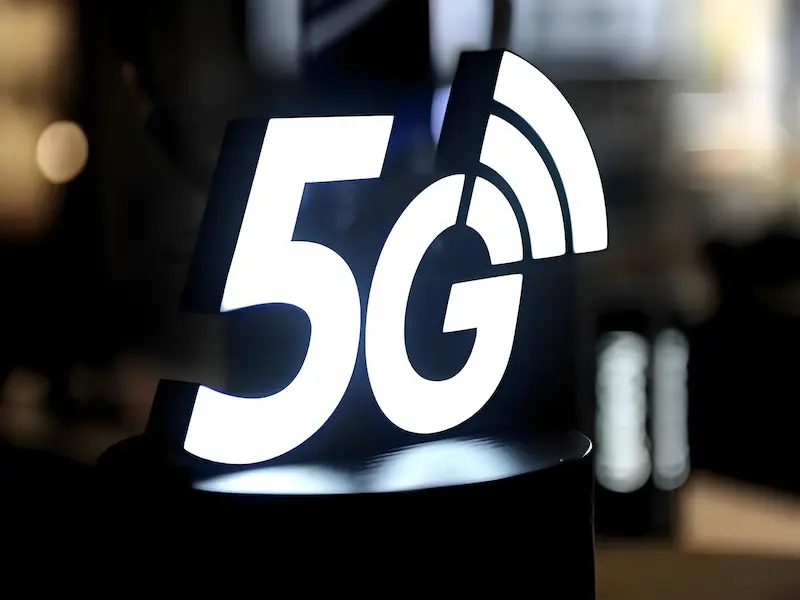- 5G technology transforms the Internet of Things (IoT) by enabling faster, more reliable communication and data transfer.
- Organisations can leverage the integration of 5G with IoT to achieve greater operational efficiency and productivity.
- This integration is leading to more efficient business operations and the development of innovative products and services.
The number of connected devices soared to 9.7 billion in 2020 and is anticipated to reach 29 billion by 2030. This drastic growth is undeniably fueled by the exponential growth of Internet of Things (IoT) devices. The growth of 5G networks is one of the biggest contributors to this change. 5G networks transform the world of data exchange with new monumental speeds, advanced security protocols, and majorly high volumes of data, resulting in completely new business models, optimized processes, and greatly improved business outcomes.
With an expected rise in connected devices from 9.7 billion in 2020 to 29 billion in 2030, the boom in the Internet of Things (IoT) is undisputed. This phenomenal growth is attributable to numerous elements, of which 5G networks is crucial. 5G networks revolutionize data exchange through high speeds, advanced security measures, and high-volume capacity, thus opening the doors to novel business models, improved processes, and enhanced overall business performance.
What are the benefits of 5G for IoT?
Connecting various aspects and functions of a system enables organisations to innovate more effectively on their current products and services and business processes.
These benefits include:
Increased Efficiency: 5G enables data transfer at much higher speeds than previous generations of wireless technology. Such speed optimizations allow for more effective and quicker data exchanges and communications between IoT devices increasing real time responsiveness and user experience.
Reduced Relays: 5G has relatively minimal latency which means there is less time in between devices sending and receiving data. Such decreases in latency is beneficial to autonomous cars and remote health care where even a few milliseconds of lag can compromise performance and safety.
Improved Mobility: 5G enables a single network to facilitate a larger number of connected devices per unit area compared to previous generations. Such capability is vital to the rapidly growing IoT ecosystem where there are billions of devices ranging from smart home appliances to industrial sensors.
Improved Connectivity: 5G technology has such features as network slicing which allows operators to divide their networks into virtual slices which are optimised for various applications of IoT. This customisation allows for the reliability that each IoT system has the requisite number of devices, resources, and services required to operate efficiently.
Also read: China’s 5G market will add US$260 billion to GDP by 2030
5G use cases in IoT
Smart cities: With the help of 5G technology, smart city infrastructures can be built by integrating many IoT devices like sensors for traffic, waste, and environmental monitoring, and smart lighting.
These devices, with multi-directional communication, can help make real-time changes as necessary, which saves the city a lot of time in planning and resource allocation. Setting up the city is much easier as 5G technology IoT devices help automate many processes.
Also, in industrial settings, 5G powered IoT devices help connectivity vis-a-vis machines and robotic arms streamlining workflows. Monitoring, along with real-time, predictive maintenance and algorithm a scheduled change of IoT devices, is also possible on a global scale.
Using 5 IoT devices venturing into predictive forging, tools, medical devices, and helicopter-based zooming, systems thoroughly mixes resource in real time accumulating to the foreclosure. 5G medical systems also make use of remote monitoring systems that allow real-time updates of a patient.
These 5E devices notify healthcare professionals of vital signs and maintanences in wards, notifying borders for alerts relating time ratio in close distance. Sensors, equal monitoring data, drones, and machines help smart converters with populated gauging for preserving farming methodologies.
These technologies facilitate real-time traffic monitoring, collision avoidance, and efficient route planning, leading to safer roads, reduced congestion, and lower emissions.
Also read: PNCC employs Open RAN for new 5G services in Palau
The future of 5G and the internet of things
5G and 4G will both be available for the foreseeable future.
5G is currently available mainly in major cities in the developed world to offload 4G in congested areas.
Besides, 5G, often in the form of LTE-M, is set to replace 2G and 3G in much of Europe. We expect nationwide 5G, and the replacement of 2G and 3G in many European countries, to be the dominant reality by 2025.

